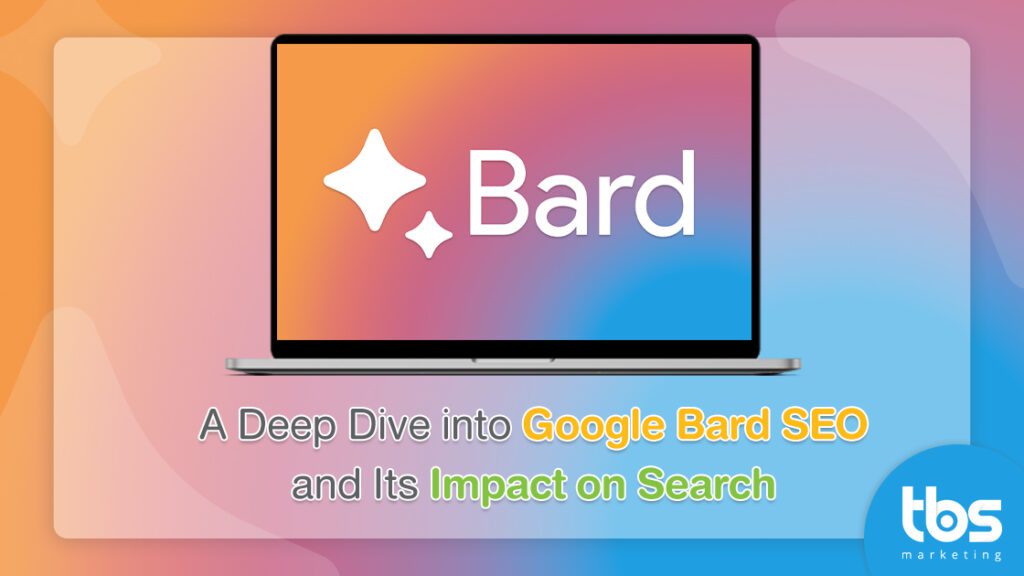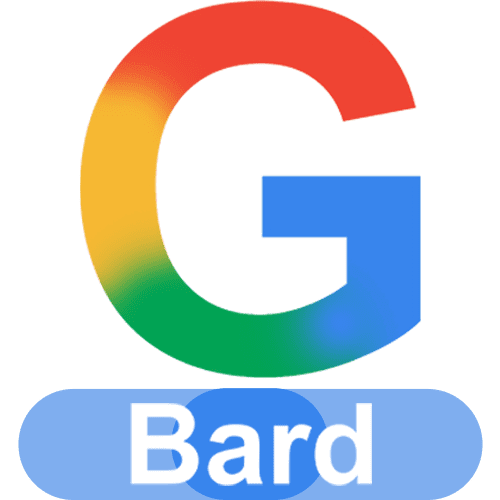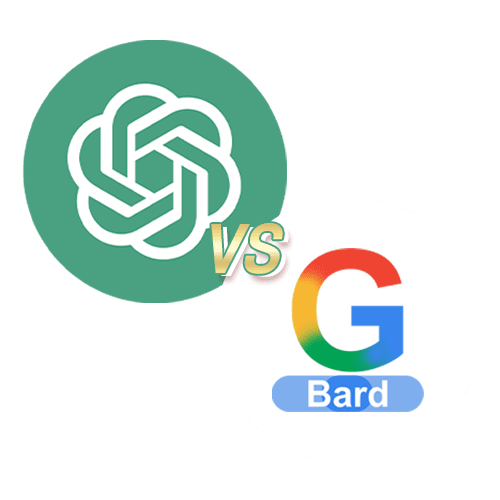
With all these advancements and the integration of AI, let’s clarify one thing: Google fully embraces AI.
Here’s evidence from their guidelines, which emphasize the focus on the quality of content, rather than how it is produced. Even SEO experts like Danny Sullivan , mentioned that Google is fine with AI, just as long as it’s useful and written for people.
So, what sets Google Bard SEO apart? Will it influence the SERP rankings? Contrary to what you might think, its primary aim is to enhance the quality of content even further. Continue reading to discover more.
What is BARD AI?
Announced on February 7th by the CEO of Google, Sundar Pichai. Google Bard is a generative AI chatbot powered by LaMDA.
Originating from Google’s continuous efforts to enhance search, Bard is a testament to the tech giant’s commitment to understanding user intent more holistically.
At its core, Bard leverages the BERT (Bidirectional Encoder Representations from Transformers) algorithm, revolutionizing the way search engines interpret user queries.

The Connection Between Google Bard and SEO
With Bard’s introduction, the SEO landscape witnessed a paradigm shift. Gone are the days of mere keyword stuffing.
Now, it’s about understanding the semantic meaning behind user queries.
Bard, with its BERT backbone, emphasizes context, making it essential for SEO professionals to craft content that resonates with genuine user intent.
| Feature/Aspect | BERT (Bidirectional Encoder Representations from Transformers) | Bard (Google Bard) |
| Nature | Machine Learning Model | AI Chatbot |
| Primary Function | Natural Language Processing (NLP) | Conversational AI |
| Developed By | ||
| Purpose | Understand the context of words in search queries | Engage in natural, open-ended conversations |
| SEO Impact | Revolutionized keyword-based search to context-based search | Enhances user experience by providing direct, AI-generated answers |
| Integration with Search | Directly affects Google Search results | Integrated with search but primarily a conversational model |
| Technical Backbone | Transformer architecture | Powered by LaMDA, but also leverages BERT for understanding context |
| Release Date | 2019 | Announced in 2023 |
| Key Feature | Understands the context between words in a sentence | Can engage in fluid conversations on any topic |
| SEO Implication | Websites need to focus on context rather than just keywords | Websites might need to optimize for conversational queries and direct answers |
Content Optimization for Google Bard SEO
With the advent of BERT, websites that prioritized contextually rich content experienced a surge in rankings, while those clinging to archaic keyword strategies grappled with challenges.
At the core of Bard lies Natural Language Processing (NLP). For SEO aficionados, this translates to:
- Creating content that resonates with natural human dialogue.
- Emphasizing clarity in context to minimize ambiguities.
- Integrating long-tail keywords that align with authentic user search
Bard’s AI-driven responses underscore the growing importance of semantic SEO, where content delivers direct, lucid, and contextually pertinent answers.
Alongside this, adhering to traditional SEO content strategies remains crucial.

Below is a guide to optimising your content for this new era, keeping in mind Google’s helpful guidelines:
Crafting Content for Google Bard SEO:
- Question-Driven Headings: Frame your headings as questions. This approach aligns with how users typically query search engines and can enhance your chances of being the base for Bard’s responses.
- Clarity and Brevity: Ensure your content is straightforward and concise. Eschew jargon and complex language for simplicity.
- Structured Lists: Incorporate bullet points and numbered lists. Bard, like Google’s Featured Snippets, often prefers such structured content.
- Optimal Content Length: Aim for content snippets that are 40-60 words long, ideal for quick answers and featured snippets.
- Implement Schema Markup: Enhance your content’s context and structure with schema markup, aiding Google in comprehending its essence.
- Performance Tracking: Regularly monitor your content’s performance via Google Search Console. Adapt based on insights to improve its chances of being featured.

- Prioritize Quality: Dedicate yourself to producing top-tier, insightful content that resonates with and benefits your readers.
- Contextual Keywords: Integrate keywords that complement your primary topic. This assists Google Bard in discerning the context and interrelation of terms.
- Synonym Usage: Incorporate synonyms of your primary keywords. This enriches your content’s context and broadens its potential ranking scope.
- Visual Enhancements: Enrich your content with relevant images and multimedia elements. These not only engage readers but also provide visual context to Bard.
- Strategic Internal Linking: Establish connections between various pages on your site through internal links. This helps Google understand the interrelation of your content.
- Website Accessibility: Ensure your website is navigable and accessible. Implement a sitemap and optimize for search engine bot accessibility.
Tangential SEO and Google Bard
Bard offers a goldmine for content ideas. By understanding its workings, SEO professionals can:
- Identify untapped content avenues.
- Target keywords overlooked by competitors.
- Broaden their content spectrum, appealing to a wider audience. One effective strategy to achieve this broadening is through tangential SEO. This approach involves creating content that might not directly relate to a brand’s core offerings but is still relevant and engaging for the target audience, thereby attracting a diverse set of readers and potential backlinks.
Beyond just search, Bard’s features offer insights into user behavior, preferences, and needs.
By leveraging these insights, websites can tailor their content, ensuring they’re not just visible but also valuable to their audience.
In the healthcare industry, for instance, these insights can be invaluable. With the rise of digital health solutions, as highlighted in this article, Bard’s AI capabilities can help healthcare providers understand patient needs better. They can tailor their online content and services to provide accurate information, personalized health advice, and improved patient care. This not only enhances the patient experience but also aids in making healthcare more accessible and efficient.
Now, let’s tackle the burning question on everyone’s mind:
Does Bard AI outshine ChatGPT?

One cannot say that the other is better, but more so that each has its own strengths and flaws. While Bard stands out in the realm of search, tools like ChatGPT have their strengths.
However, when it comes to SEO, Bard’s deep integration with Google’s search engine gives it an unparalleled edge.
We should also note that ChatGPT’s knowledge is capped at 2021, giving BARD AI an advantage in this aspect.
For a more detailed comparison of their capabilities in expressing ideas or simplification, please check out this comprehensive guide.
Conclusion
The advent of Google Bard and BERT has redefined the SEO arena. By understanding and adapting to these changes, SEO professionals can ensure their strategies are not just relevant but also future-proof. As the digital world continues to evolve, staying informed and agile is the key to SEO success.
Key Takeaways
- Google’s Embrace of AI: Google supports AI-generated content, emphasizing its usefulness and relevance to users.
- Introduction of Google Bard: A generative AI chatbot powered by LaMDA, Bard aims to enhance content quality and better understand user intent using the BERT algorithm.
- SEO Evolution with Bard: Bard has shifted the SEO landscape from keyword-centric to context-centric, emphasizing genuine user intent and semantic meaning.
- Content Optimization for Bard SEO: SEO strategies should focus on natural human dialogue, clarity, context, and integrating long-tail keywords that align with genuine user searches.
